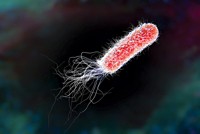Advertisement
Grab your lab coat. Let's get started
Welcome!
Welcome!
Create an account below to get 6 C&EN articles per month, receive newsletters and more - all free.
It seems this is your first time logging in online. Please enter the following information to continue.
As an ACS member you automatically get access to this site. All we need is few more details to create your reading experience.
Not you? Sign in with a different account.
Not you? Sign in with a different account.
ERROR 1
ERROR 1
ERROR 2
ERROR 2
ERROR 2
ERROR 2
ERROR 2
Password and Confirm password must match.
If you have an ACS member number, please enter it here so we can link this account to your membership. (optional)
ERROR 2
ACS values your privacy. By submitting your information, you are gaining access to C&EN and subscribing to our weekly newsletter. We use the information you provide to make your reading experience better, and we will never sell your data to third party members.
Analytical Chemistry
Probing Probiotic Cheese
Food Science: NMR generates metabolic profiles of probiotic cheeses
by Erika Gebel
April 4, 2011

Watch out, yogurt. Cheese may take over as a practical (and delicious) way to deliver friendly bacteria to the gut. But adequate methods have been lacking to monitor cheese's inner life: the chemicals that determine its taste, smell, texture, and health benefits. Now Portuguese researchers report that nuclear magnetic resonance spectroscopy can quickly and easily detect those molecules (J. Agric. Food Chem., DOI: 10.1021/jf104605r).
Previous studies have used mass spectrometry to study cheese composition, but this method requires time-consuming sample preparation and purification steps, and its results are often difficult to reproduce. Ana Freitas at the Piaget Institute turned to NMR because of its reproducibility and ability to take a snapshot of all chemical components in a single experiment.
Freitas' team used NMR to monitor metabolites --nutritionally important substances such as fats, proteins, and carbohydrates --in a variety of probiotic cheeses that they made. When producing these cheeses, the researchers varied the species of probiotic bacteria, as well as adding different compounds called prebiotics. These non-digestible compounds enhance the activity of bacteria when the microbes reach a person's intestines.
On the surface, the metabolic profiles for the various cheeses looked similar, but Freitas dug into the data to reveal key differences. For example, cheeses with prebiotics experienced less protein degradation during the ripening process.
The results from NMR squared well with biochemical analyses, establishing NMR as a new tool for the study of probiotic cheeses, Freitas says. Previous attempts at marketing probiotic cheeses have fallen flat, at least in the U.S. But studying and developing their chemical properties could eventually make a bug-filled block of cheese an appealing health food, Freitas says.




Join the conversation
Contact the reporter
Submit a Letter to the Editor for publication
Engage with us on Twitter